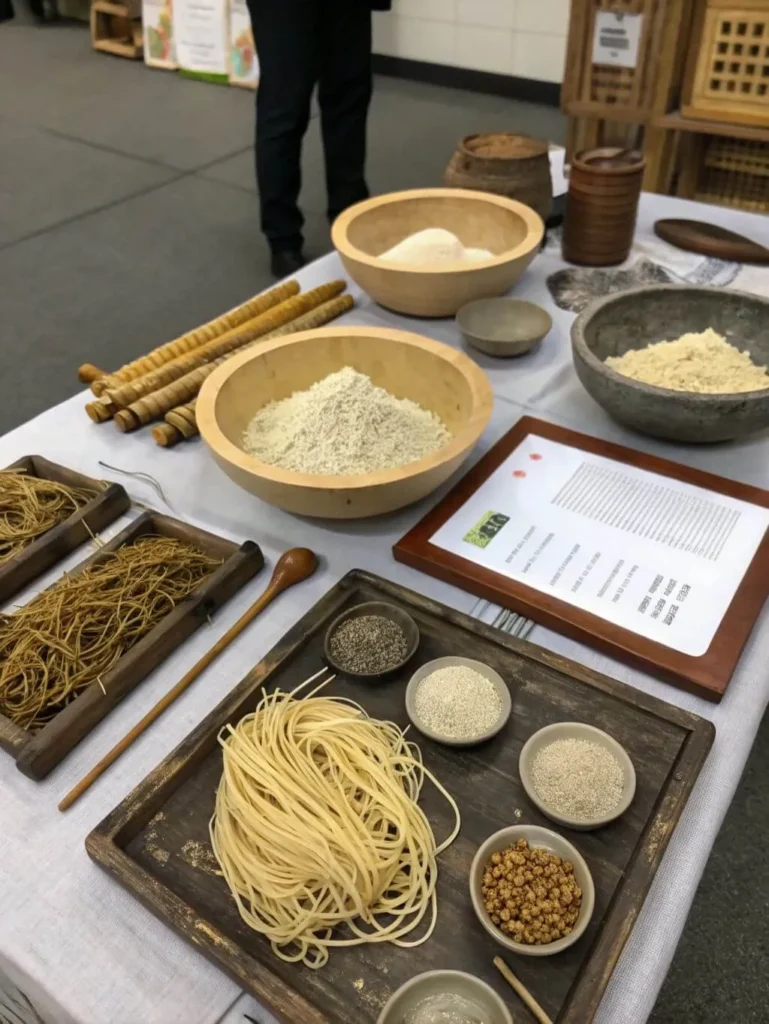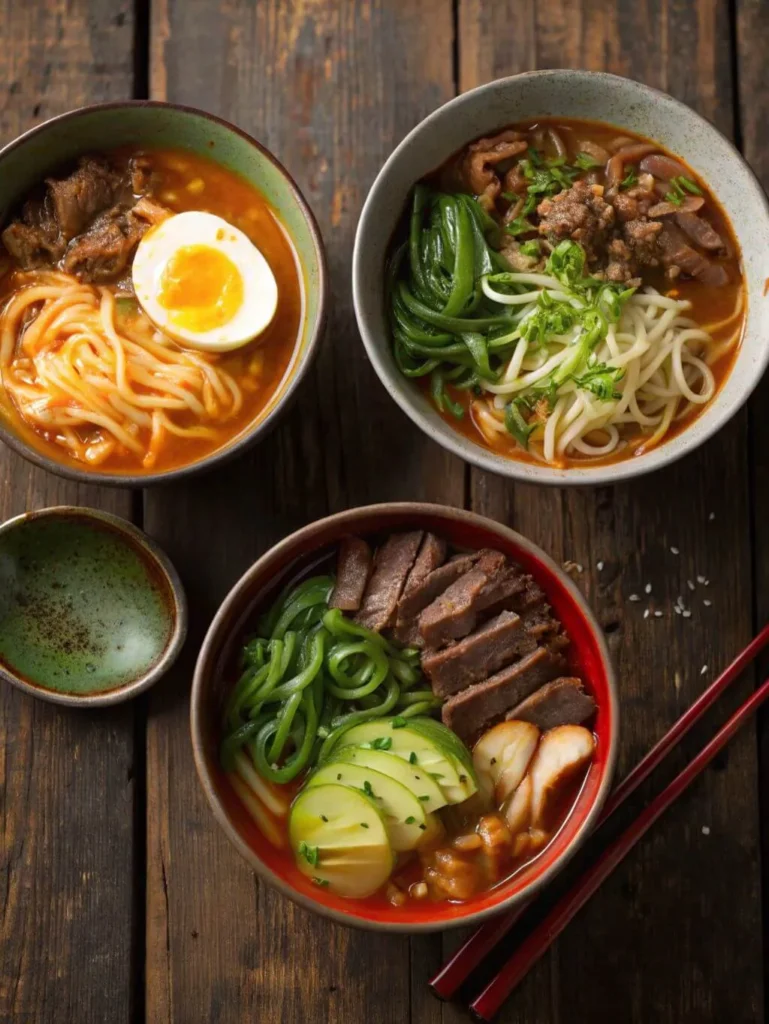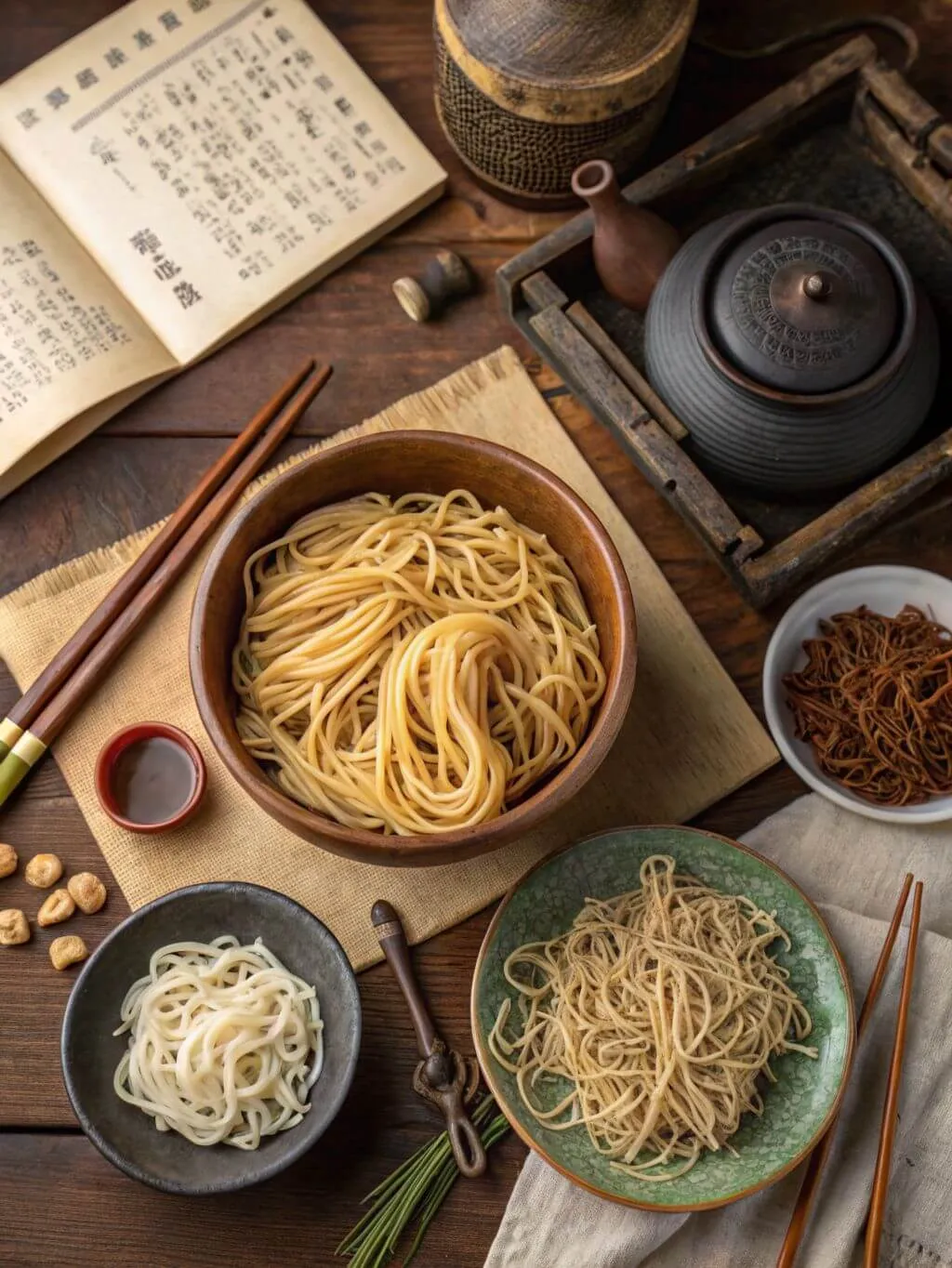Noodles aren’t just food—they’re memory, culture, and identity twirled around a fork or slurped from a steaming bowl. For me, Olivia—a lifelong chef and noodle devotee—the culture and history of noodles began on a wooden stool in my grandmother’s kitchen. That’s where I first learned to fold dough and stretch it into strands of possibility. It was humble, heartfelt, and deliciously unforgettable.
Since then, noodles have taken me around the world—from Tokyo ramen counters to Sicilian trattorias. With every bite, I asked one question: What do noodles mean to you? The answers changed across borders, but one truth held steady: noodles connect us. Noodles are a universal language of comfort, flavor, and tradition.
On this flavorful journey through time, we’ll explore how noodles evolved from ancient Chinese bowls to a worldwide staple—discussing their disputed origins, cultural importance, and global transformations. Whether you’re a curious cook or a noodle enthusiast, this story will deepen your appreciation for that next twirl or slurp.
The evolution of noodles is more than just a culinary narrative—it’s a tapestry woven with migration, innovation, and cultural identity. From the ancient millet noodles unearthed in China to today’s ramen bowls and gluten-free pastas, noodles have journeyed across continents and centuries, adapting to each era’s tastes and technologies. Today, they symbolize comfort in Tokyo, heritage in Italy, and creativity in plant-based cuisine.
The Origin Story of Noodles: Myths, Millennia, and Millet Flour

The culture and history of noodles is a story that spans thousands of years—woven through ancient civilizations, myths, and groundbreaking discoveries. Noodles are more than a meal—they are an edible timeline that connects generations and continents.
The 4,000-Year-Old Bowl That Changed Everything
In 2005, a team of archaeologists uncovered one of the most exciting finds in the culture and history of noodles: a bowl of millet noodles over 4,000 years old, preserved in the ruins of the Lajia site in northwestern China. This discovery revealed that noodles had been hand-pulled and consumed long before the rise of Roman pasta or even the written word in many parts of the world.
So, who found the 4,000-year-old noodles? It was Chinese researchers working in the Yellow River basin who made this historic find, strengthening the argument that China holds the oldest claim in the long culture and history of noodles.
Myths, Manuscripts, and Marco Polo
The culture and history of noodles is often clouded by the enduring myth of Marco Polo, who supposedly brought noodles from China to Italy in the 13th century. However, historical records show that Italy already had pasta before his return. In contrast, early Chinese texts from the Han Dynasty reference noodle-like foods, emphasizing their deep cultural roots in Asia.
From millet dough in ancient bowls to modern stir-fries, the culture and history of noodles reminds us that this humble food has always been a symbol of innovation, sustenance, and connection.
🌍 Did Noodles Originate in Italy or Asia?
It’s one of the most hotly debated questions in food history: Did noodles originate in Italy or Asia? The truth is deliciously complex—and it all comes down to ingredients, geography, and a little bit of myth-busting.
🇨🇳 China: The Archaeological Champion
As covered in Part 1, China holds the oldest known physical evidence of noodles—dating back 4,000 years. These ancient strands, made from millet, predate any pasta records in Europe by millennia. Chinese noodles evolved through dynasties, taking countless forms from hand-pulled lamian to chewy chow mein.
🇮🇹 Italy: The Flour-Powered Innovators
Meanwhile, Italy developed a distinct noodle culture of its own—likely independently. By the time of the Etruscans and Romans, wheat-based doughs were being shaped and dried. The first written record of pasta in Italy appears around the 13th century. These early noodles weren’t spaghetti yet—but the groundwork for Italy’s iconic pasta tradition was already being laid.
Two Worlds, Same Idea?
While Marco Polo is often (wrongly) credited with “bringing noodles from China to Italy,” scholars now agree this is a myth. Instead, it’s more likely that both regions discovered the noodle separately, using local grains and techniques suited to their environment.
So, to answer the age-old question: Did noodles originate in Italy or Asia?
➡️ Both—and neither. Noodles, like many great inventions, emerged in different places, shaped by culture, climate, and creativity.
🐉 The History of Noodles in China: From Han Scrolls to Street Stalls
When it comes to the culture and history of noodles, China is where the timeline begins—and it’s nothing short of epic. In this region, noodles are not just sustenance; they are tradition, celebration, and craftsmanship rolled into one. Understanding the Chinese noodle is essential to grasping the full culture and history of noodles worldwide.
Han Dynasty Origins
The earliest chapters in the culture and history of noodles appear during the Han Dynasty (206 BCE – 220 CE). Ancient records mention boiled strips of dough—an early predecessor to the wide variety of noodles we see today. These early dishes reveal how necessity, wheat, and skill fused into something deeply cultural.
Song Dynasty Street Culture
Fast forward to the Song Dynasty (960–1279), and noodles became a public experience. Street stalls and markets began to buzz with vendors serving freshly made noodles to locals and travelers. It marked a major turning point in the culture and history of noodles, where food met urban life.
Iconic Regional Variations
No other country has influenced the culture and history of noodles quite like China. From the north to the south, regional variations offer insight into flavor preferences and local ingredients:
- Lamian (hand-pulled) – Delicate strands pulled to perfection.
- Dao xiao mian (knife-cut) – Ribbons sliced into bubbling pots.
- Chow mein and lo mein – Stir-fried icons that shaped global noodle culture.
These styles reflect the complexity and diversity within Chinese cuisine. As a trained chef who has walked the alleyways of Beijing and Shanghai, I’ve seen firsthand how the culture and history of noodles is kept alive through family recipes and street food artistry.
A Living Legacy
China’s influence extends far beyond its borders. Much of the global culture and history of noodles owes its beginnings to these ancient innovations. Whether it’s ramen in Japan or pad thai in Thailand, Chinese noodle culture is the seed from which many other culinary traditions grew.
Explore classic Chinese noodle traditions at home:
The culture and history of noodles in China is more than a timeline—it’s a living, evolving story that continues to shape how we eat today.
Cultural Significance: Noodles as Symbols of Life, Luck, and Love
Beyond sustenance and taste, noodles hold deep cultural weight. Across continents and generations, they symbolize everything from prosperity and longevity to creativity and comfort. This is where the culture and history of noodles transforms from food into folklore.
In Asia: Noodles as Spiritual Symbols
In many East Asian cultures, noodles represent long life. It’s common to serve them at birthdays and Lunar New Year celebrations, where cutting them is considered bad luck. Longevity noodles, especially popular in China, are intentionally made uncut and extra long to wish someone a full, uninterrupted life.
In Japan, soba noodles are eaten on New Year’s Eve to symbolize a clean break from the past and a strong start to the future. It’s rituals like these that highlight how deeply the culture and history of noodles is embedded in tradition.

A Global Language of Comfort
Whether it’s a hot bowl of ramen on a rainy day, creamy fettuccine shared at Sunday dinner, or instant noodles slurped between college exams, noodles are universal comfort food.
Immigrant Spaghetti blends tradition with adaptation—using canned sauce, hot dogs, or ground beef in place of classic ingredients. Born in immigrant kitchens, it’s a comfort dish shaped by resourcefulness. Learn more in our full article on Immigrant Spaghetti.
Across countries and generations, they serve as a warm, familiar presence in uncertain moments.
Their versatility also makes them an artist’s canvas—flexible enough to express every culture’s flavor language while still retaining their humble essence. That’s why the culture and history of noodles isn’t just about timelines; it’s about how they feel, what they mean, and how they bring people together.
From Tradition to Your Table
Want to explore this cultural richness at home? Start with a few globally loved recipes:
- Easy Spaghetti Recipe
- Homemade Noodles Recipe
- Shirataki Noodles for a low-carb twist
The culture and history of noodles reminds us that a simple bowl of dough and water can carry centuries of meaning—and still feel like home.
Frequently Asked Questions About the Culture and History of Noodles
❓ Who invented the noodle?
While multiple regions developed noodle-like foods independently, the earliest known evidence of noodles comes from China, dating back over 4,000 years. These ancient noodles, made from millet flour, were discovered at the Lajia archaeological site—making China the leading contender in the origin story.
Who found the 4,000-year-old noodles?
In 2005, Chinese archaeologists uncovered a sealed bowl of noodles beneath layers of earth at the Lajia site near the Yellow River. This discovery marked the oldest physical evidence in the culture and history of noodles, shifting the global narrative in China’s favor.
Did noodles originate in Italy or Asia?
Although Italy is famous for pasta, archaeological and historical evidence points to Asia—specifically China—as the birthplace of noodles. Italy developed its pasta traditions independently, but noodles likely originated in Asia first.
What is the history of noodles in China?
Noodles have been a staple in Chinese cuisine since at least the Han Dynasty. Over centuries, regional styles like lamian (hand-pulled), dao xiao mian (knife-cut), and chow mein evolved, embedding noodles deeply into everyday life and ceremonial traditions.
Bonus: What are the most popular types of noodles today?
Check out our detailed guide on Noodle Types and Varieties to explore global favorites from ramen to fettuccine and everything in between.
Wrapping Up: The Bowl That Binds Us All
From ancient millet noodles buried under Chinese soil to Instagram-worthy pasta bowls served in modern kitchens, the culture and history of noodles is a story that transcends time, geography, and generations.
Noodles have connected empires and households, celebrated new beginnings, and comforted during quiet nights in. They’ve evolved with us—stretching, folding, frying, and simmering across cultures and cuisines.
As someone who’s slurped her way across continents and stood on a wooden stool in her grandmother’s kitchen making her first noodles by hand, I can tell you this: noodles aren’t just food—they’re heritage, joy, and community in one warm, twirlable package.
🍽️ Your Noodle Journey Starts Here
Ready to continue your own noodle story? Start with these easy, flavor-packed recipes:
- Fettuccine Alfredo Recipe
- Easy Spaghetti Recipe
- Homemade Pappardelle
- Lo Mein Noodles
- Shirataki Noodles
📌 Bookmark this guide, share it with fellow food lovers, and tag me on social when you try something new—I’d love to see your noodles in action.
Because when you follow the noodle, you follow culture, flavor, and connection—one strand at a time.


1 thought on “The Culture and History of Noodles”